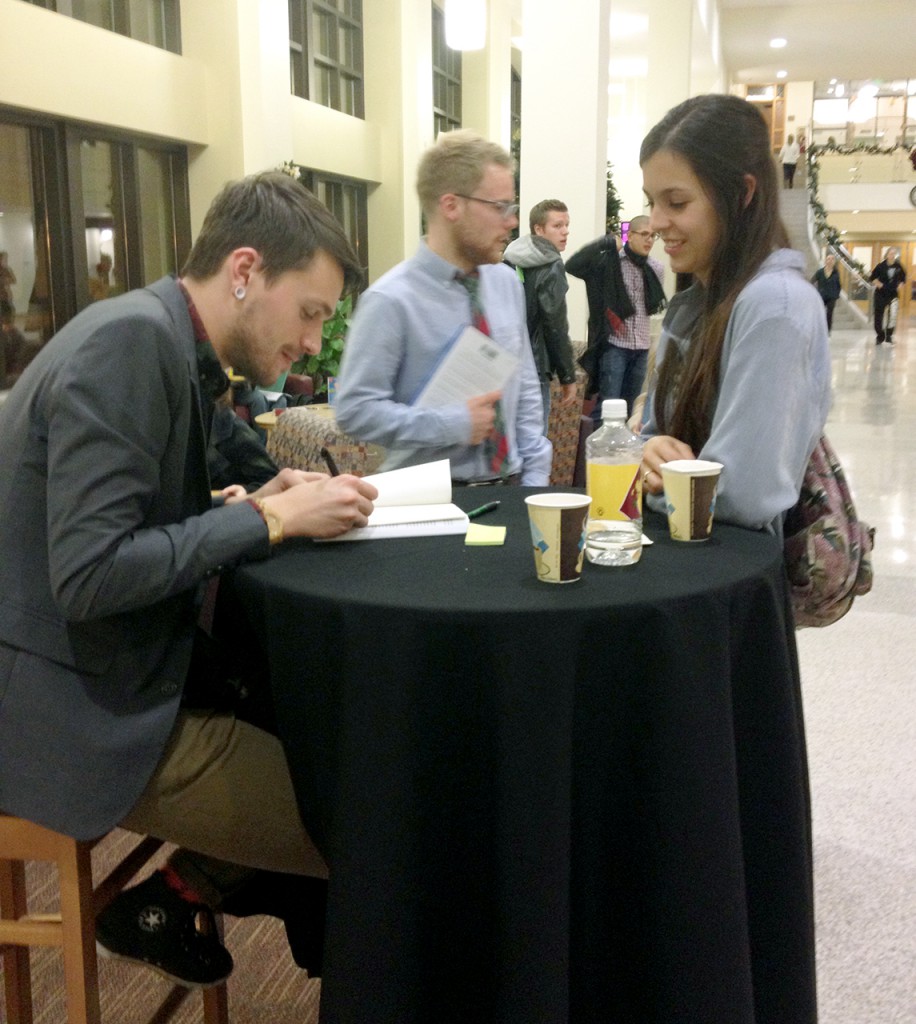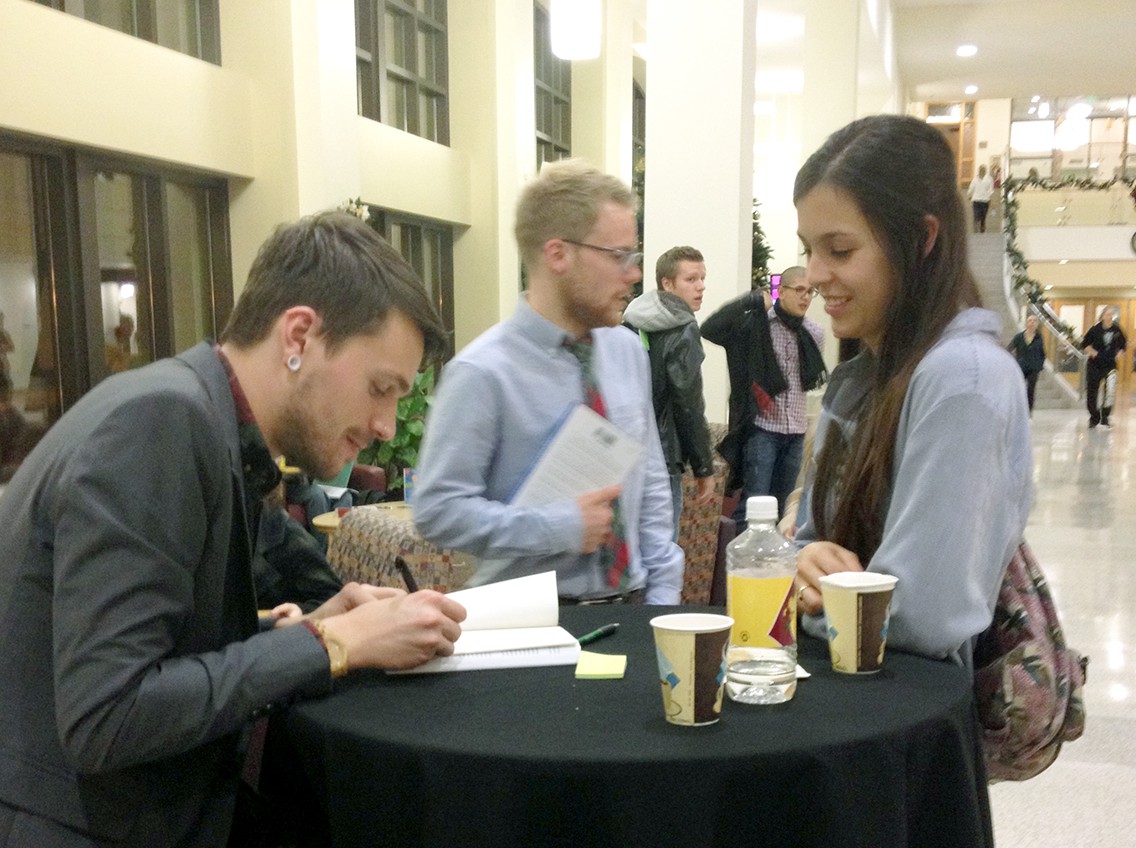
The beginning to finding the answer is by bridging gaps through storytelling.
The author of “Faitheist: How an Atheist Found Common Ground with the Religious,” Chris Stedman, urged everyone in the Centrum last Sunday night to find a way to understand religious differences though sharing their own stories.
Senior Andreas Rekdal had talked to Stedman a few times on the phone before his presentation at Concordia and explained that it was actually Stedman’s idea to trek up to Moorhead.
“He mentioned that he would be in Minneapolis and his mom could give him a ride,” Rekdal said.
Stedman, a Minnesota native, took the podium in front of a nearly full Centrum to tell his own story and discuss his work with Eboo Patel’s Interfaith Youth Core.
“I have something I need to say right away,” Stedman said. “I am…an atheist,” he whispered.
The audience jokingly gasped and a few people laughed. Most people who attended the talk may have already known this fact because of the title of his book. Stedman explained though that sometimes it is very hard for atheists to say that out loud to people.
During the question-and-answer session after his speech, a few people stood up and agreed it was hard to say. They asked for his advice on how to explain their non-religious beliefs, especially on a fairly religious campus.
“Live openly,” Stedman said. He gave examples of people who had received his atheism well and those who have not been so welcoming. “There is nothing you can really do about those people,” he said with a shrug.
He hopes one day his legacy will help increase the instinct to try and understand, rather than defend, when it comes to religious discussions between religious and non-religious people. One way in which he aims to do this is by including more atheists in interfaith work done around the nation.
“Being a part of a community helps you to feel grounded in your interfaith work,” Stedman said. He has already reached out to some of the largest secular groups in the US and has received mostly positive feedback.
There are negative perspectives from both atheists and Christians when it comes to interfaith work. Stedman quoted a Christian friend of his who says it’s better to learn to live in the tension (between being a Christian and understanding interfaith work) than to not understand one another.
“The words service and ministry may be different,” Stedman said, “but the values are the same.”
Christians and atheists alike reacted well to Stedman’s words and agree that atheists need to be included in interfaith work. Freshman Logan Block, who is involved with Campus Ministry Commission, says it’s nice to see another perspective.
“I’d rather talk about differences in a way that isn’t coming out ahead or trying to transform someone’s beliefs,” he said.
Senior Andraya Abrego has been involved in Concordia’s interfaith group Better Together all year and says she doesn’t know if someone like him has spoken on Concordia’s campus before. “He talked about how he felt alone and he was the only one who was an atheist who was adamant about interfaith work,” said Abrego. “I’ve never felt so included in anything.”
Rekdal, who was largely responsible for getting Stedman here, says he is grateful that so many people turned up and were interested, “particularly people who have religious faith,” he said.
“So given that we are here, what will we do,” Stedman said. “What will we do?”

